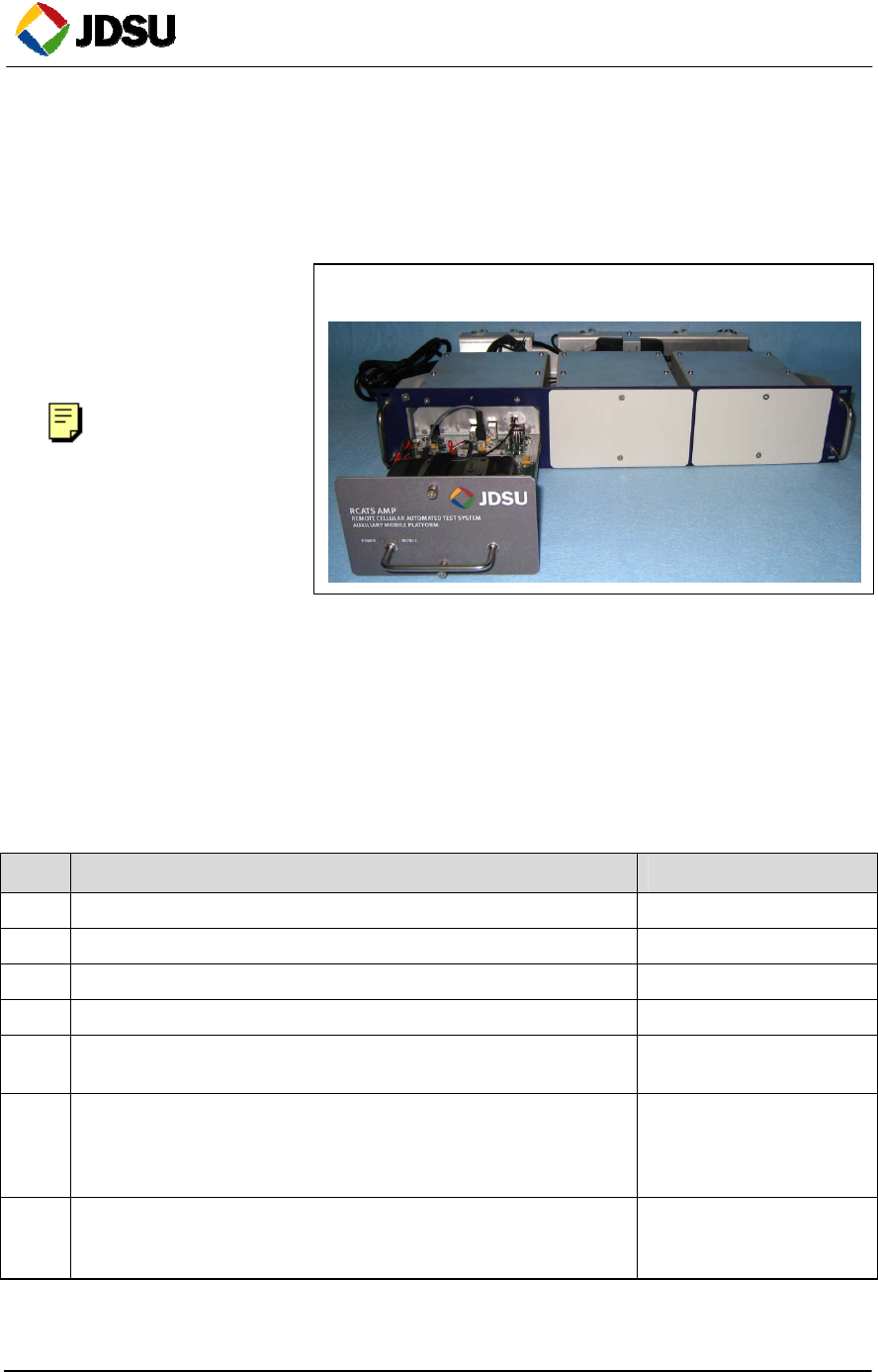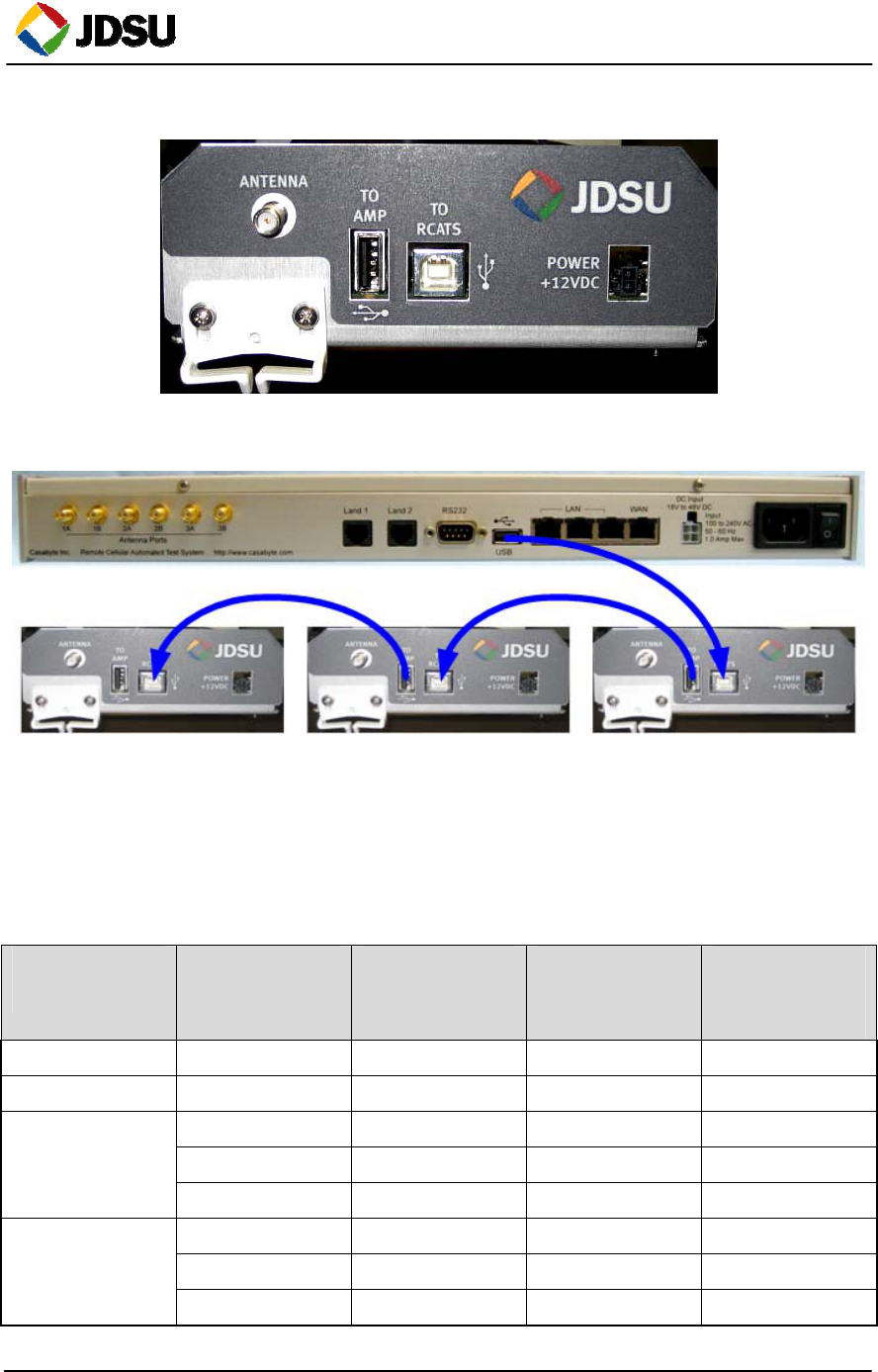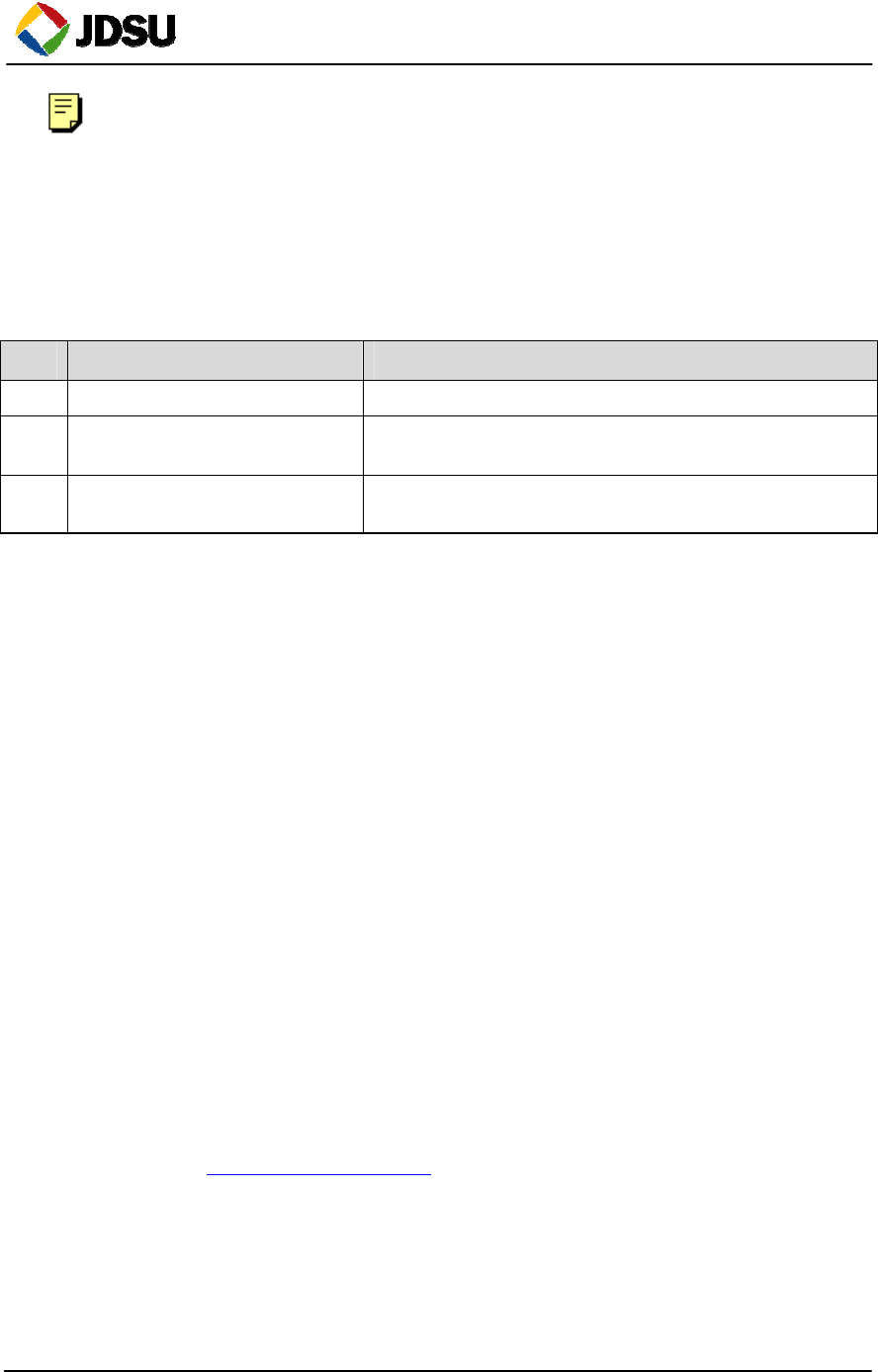Viavi Solutions RSS002-0000 Cellular/PCS CDMA Phone with Bluetooth User Manual RCATS Auxiliary Mobile Platform Quick Start Guide
Viavi Solutions Inc. Cellular/PCS CDMA Phone with Bluetooth RCATS Auxiliary Mobile Platform Quick Start Guide
User Manual

PN 21133747
Updated: 1 December 2008 JDSU Page 1 of 3
Figure 1. AMP in Rack
RCATS Auxiliary Mobile Platform Quick Start Guide
Introduction
The RCATS Auxiliary Mobile Platform (AMP) connects to XScale probes via USB
to allow use of new
devices, including some
handsets. This allows the
user to extend the testing
capabilities of the probe.
Note: A probe can
control only three cell
phone modules at any
time—including any
connected AMPs.
AMPs are installed in
racks that can hold and
provide power for up to three AMPs. The AMP Power indicator illuminates when
power is applied and the AMP Mobile indicator illuminates when it in use.
Installation and Usage
Follow the steps in Table 1 to install an AMP into your RCATS system.
Table 1. AMP Installation
Step Action Result
1. Shut down power to the probe. —
2. Install AMP into rack. —
a. If applicable, connect antenna to AMP. Note: See Figure 2.
b. Plug power source into AMP. Note: See Figure 2.
c. Connect the "USB" connection on the back of probe to the "TO
RCATS" connection on the back of the AMP using a USB cable. Note: See Figure 3
d. If more than one AMP is to be attached to the probe, daisy-chain the
AMPs by connecting the "TO AMP" connection on the back of an
installed AMP to the "TO RCATS" connection on the back of next
the AMP in the chain using a USB cable.
Note: See Figure 3.
3. Apply power to the probe. Probe firmware 7.0.9.x and
higher will automatically
detect the AMP.

RCATS Auxiliary Mobile Platform Quick Start Guide
Updated: 1 December 2008 JDSU Page 2 of 3
Figure 2. AMP (back)
Figure 3. Daisy-chaining AMPs
Modules in a probe use letter designations to facilitate testing. When AMPs are
attached to the probe, they assume the letter designations of modules depending on
(1) how many modules are in the probe they are attached to and (2) how many AMPs
are connected to the probe. Letter designations are shown in Table 2.
Table 2. Identifying AMP Letter Designations
# of Modules
in Probe # of AMPs
Connected to
Probe
First AMP
Letter
Designation
Second AMP
Letter
Designation
Third AMP
Letter
Designation
3 1, 2, or 3 E B A
2 1, 2, or 3 E B A
1 B — —
2 E B —
1
3 E B A
1 A — —
2 B A —
0
3 E B A

RCATS Auxiliary Mobile Platform Quick Start Guide
Updated: 1 December 2008 JDSU Page 3 of 3
Note: When an AMP assumes a letter designation, the internal module with that
letter designation is deactivated automatically.
Removal
Follow the steps in Table 3 to remove an AMP from your RCATS system.
Table 3. AMP Removal
Step Action Result
1. Shut down power to the probe. —
2. Disconnect power, antenna, and
USB connections to AMP. —
3. Apply power to the probe Probe automatically reactivates the internal module of the
letter designation that the AMP had assumed per Table 2.
FCC Compliance
This device complies with Part 15 of FCC rules. Operation is subject to the following two conditions:
1) this device may not cause harmful interference and 2) this device must accept any interference
received, including interference that may cause undesired operation.
Changes or modifications not expressly approved by the party responsible for compliance could void
the user’s authority to operate the equipment.
NOTE: This equipment has been tested and found to comply with the limits for a Class A digital
device, pursuant to part 15 of the FCC Rules. These limits are designed to pro-vide reasonable
protection against harmful interference when the equipment is operated in a commercial environment.
This equipment generates, uses, and can radiate radio frequency energy and, if not installed and used in
accordance with the instruction manual, may cause harmful interference to radio communications.
Operation of this equipment in a residential area is likely to cause harmful interference in which case
the user will be required to correct the interference at his own expense.
This equipment complies with the FCC RF radiation exposure limits set forth for an uncontrolled
environment. This equipment should be installed and operated with a minimum distance of 20
centimeters between the radiator and your body.
Contacting JDSU
If you need technical support, please contact JDSU RCATS Support:
• E-mail—rcatssupport@jdsu.com
• Phone:
o Local—425-254-9925 (7–5, Mon–Fri, Pacific Time)
o Toll Free—888-352-9527 option 2 (any time)